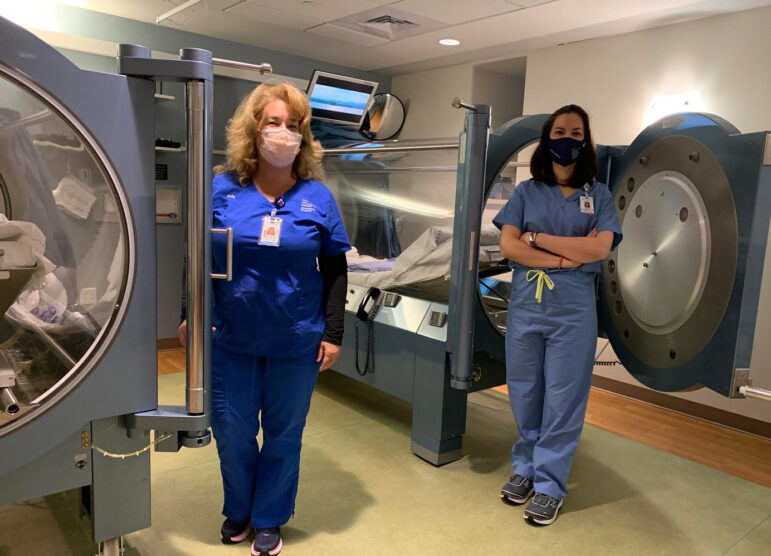Emerging evidence shows hyperbaric oxygen therapy – best known for treating scuba divers for decompression sickness – can effectively deliver much-needed oxygen to COVID-19 patients.

Greenwich Hospital is one of six medical facilities nationwide – and the only one in Connecticut – slated to take part in a yearlong trial to treat 600 COVID-19 patients with hyperbaric oxygen therapy.
The hospital has already treated three COVID-19 patients with hyperbaric oxygen therapy with some promising results.
One patient who had severe symptoms, including difficulty breathing, said his airways began to clear after 10 minutes in the chamber.
“This treatment may help some critically ill COVID-19 patients avoid intubation and mechanical ventilators, which so often impact recovery and survival,” said Sandra Wainwright, MD, medical director of Greenwich Hospital’s Center for Hyperbaric Medicine and Wound Healing in a release from Greenwich Hospital.
At Greenwich Hospital, hyperbaric medicine is often used to treat difficult-to-heal wounds that have not responded to traditional treatments. Now COVID-19 patients are finding relief in hyperbaric chambers that increase oxygen levels to extremely high levels when patients need it the most.
Delivered while patients lie in an enclosed chamber, the treatment fully saturates red blood cells and plasma with oxygen to combat the harmful effects of the coronavirus on the lungs. Patients receive the 90-minute treatment for five consecutive days.
“Patients with severe pneumonia due to COVID-19 can’t get enough oxygen on their own to sustain their organs,” Dr. Wainwright said.
“They’re constantly panting for air, breathing at about 45 to 50 breaths per minute,” she added. “That’s a breath almost every second.”
Fourteen to 18 breaths per minute is considered normal.
But once in the chamber, patients begin to relax and their breathing slows down.
“You see the fear start to leave their eyes. Their muscles relax. Some patients take a nap,” she said. “For a precious 90 minutes, they actually feel normal again.”